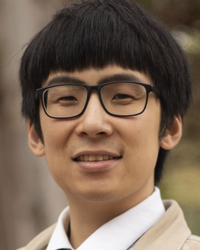Quantum information science is a fascinating field that has been pushing the limits of what we thought was possible. One of the most important tasks in quantum information technology is quantum state tomography. Simply put, it involves reconstructing a quantum state by making repeated measurements of copies of the state. However, reconstructing the full density matrix requires exponentially many samples in many-body systems. But don’t worry, researchers have found a way to predict a collection of properties of the quantum system with only a polynomial number of samples! This is known as classical shadow tomography (Huang, Kueng, Preskill).

Classical shadow tomography is an efficient approach to extract information about an unknown quantum state by measuring it in random basis. But the original proposal for classical shadow tomography had some limitations. It was limited to two measurement schemes: the single-qubit (local) Pauli measurement and the global Clifford measurement. The former is great for predicting local operators but inefficient for larger operators, while the latter is efficient for low-rank operators but not feasible on near-term quantum devices due to extensive gate overhead. The question arose: how can we go beyond these two limits and develop more flexible measurement schemes for classical shadow tomography?
In our recent work arXiv:2209.02093, we have developed a new scalable classical shadow tomography approach for generic randomized measurements that are implemented with finite-depth local Clifford random unitary circuits. What does that mean? Essentially, we have found a way to create more flexible measurement schemes to efficiently read out the quantum state on noisy intermediate-scale quantum (NISQ) devices.
This new method is exciting because it interpolates between the limits of Pauli and Clifford measurements, and is now called shallow classical shadows. It is great for predicting operators of various sizes, making it a more versatile approach to quantum state tomography. If you want to know more about shallow classical shadows, you can watch my talk Scalable Classical Shadow Tomography with Shallow Circuits and Quantum Dynamics - Yi-Zhuang You, UC San Diego at the KITP Program of Quantum Many-Body Dynamics and Noisy Intermediate-Scale Quantum Systems.
Overall, this new development in classical shadow tomography is a significant step forward in quantum information technology. It opens up new possibilities for predicting the properties of quantum systems with more flexible measurement schemes. As we continue to push the boundaries of quantum technology, it’s exciting to see how these innovations can help us unlock even more of its potential.
